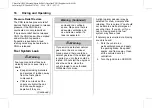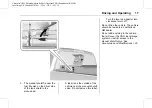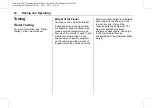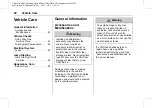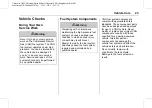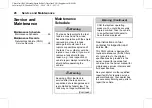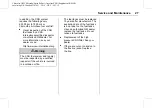
Chevrolet/GMC Silverado/Sierra Bi-Fuel (Gasoline/CNG) Supplement (GMNA-
Localizing-U.S/Canada-9234766) - 2016 - CRC - 8/13/15
12
Driving and Operating
The CNG fill valve is behind the fuel
door on the driver side of the tank
shield in the pickup bed.
There is an identifying blue
diamond-shaped CNG label on the
rear of the vehicle. Do not remove
this label. This label is necessary for
compliance with NFPA-52
regulations. Driving without this
label may violate the laws or
regulations in some states.
Replacement labels can be ordered
from your dealer.
Refueling Procedure
There are two methods of refueling:
fast filling or slow filling. Fast filling
is normally used in fuel stations for
natural gas vehicles. It takes about
six to eight minutes to fill up the fuel
tanks. Slow filling is done with a
vehicle refueling appliance or a
time-fill post provided by the fleet
operator. Refueling time varies
depending upon the refueling
system used
—
consult with the
refueling station attendant or system
provider. Always observe all safety
recommendations and operating
instructions on the refueling
equipment. When refueling, use a
fuel fill nozzle that complies with
ANSI/CSA-NGV 1-2006 standards.
Nozzles are designed according to
their maximum fill pressure: P30
(blue handle) for 20 684 kPa
(3,000 psig) and P36 (yellow
handle) for 24 800 kPa (3,600 psig).
Refuel with a yellow P36 nozzle
where available. Using a blue P30
nozzle will provide a partial fill only.
During fueling, CNG needs to be
delivered to the vehicle at the
appropriate pressure in relationship
to the ambient temperature. This
can be done automatically by a
temperature compensation system
on the CNG fuel dispenser or
manually by stopping the CNG fill at
a recommended pressure. GM
recommends that customers use
CNG fueling stations that have a
temperature compensation system
whenever possible. Check with the
fuel station. If one is not available,
see the temperature compensation
chart that follows in this section to
choose the appropriate fill pressure
for the ambient temperature. In
addition, fill only to the pressure
level for the lowest ambient
temperature anticipated during
fueling.

















